Today I’m going to teach you the Japanese word for “green”. As with the other color words before, you are not just going to learn one translation but 8 ways to say “green” in Japanese. All explanations and definitions will include accurate English translations, kanji, and hiragana, of course.
Midori (緑, みどり) is the modern Japanese word and kanji for “green” and the “color green” in Japanese. Ao (青, あお) and aoi (青い, あおい) are traditional color words that are used for both the color “blue” and “green”. Midoriiro (緑色, みどりいろ) and guriin (グリーン) are alternative ways to say “green” in Japanese.
Read on, if you want to learn all 8 ways to say “green” in Japanese including the words for “emerald“, “dark green“, and “light green“. I will also elaborate a bit on the common question “midori (緑) vs. aoi (青い) – is it blue or green?” and have added a list of useful words that contain the word green such as “green tea“, “green dragon“, and “green apple“.
How to Say “Green” in Japanese
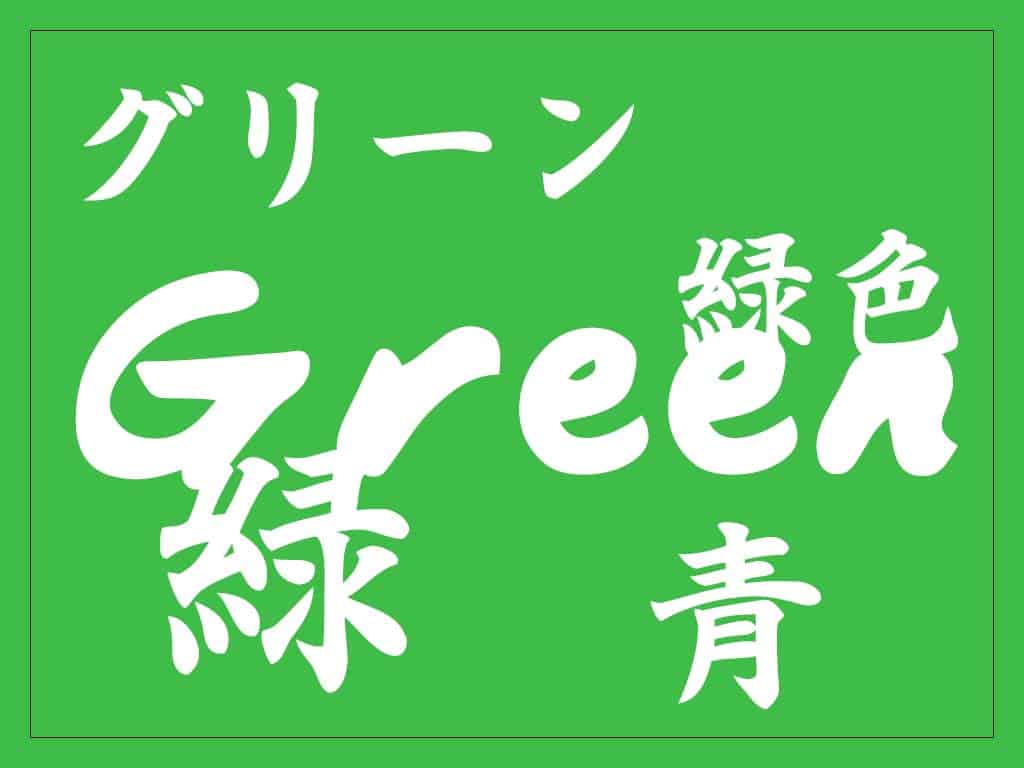
- midori – 緑
- midoriiro – 緑色
- ao – 青
- aoi – 青い
- guriin – グリーン
- hekishoku – 碧色
- fukamidori – 深緑
- moegiiro – 萌黄色
1. Midori – Most Distinct Japanese Word & Kanji for “Green”
Midori (緑, みどり) is the modern Japanese word and Japanese kanji for “green” and the “color green“. It is commonly used when referring to “green” as a color and can also be turned into an adjective to describe something as green by adding the particle no (の).
Except for “greenery” and “verdure” (source), it doesn’t have any other meanings, so it is the most distinct and clear way to say that something is “green” in Japanese.
midori
緑
green
greenery
2. Midoriiro – Another Word for “Green” or “Green Color”
Midoriiro (緑色, みどりいろ) is an alternative Japanese word that you can use for “green” and the “color green“. The word consists of midori (緑), the word and kanji for “green“, and iro (色), the Japanese word and kanji for “color“. By adding the particle no (の) you can turn this noun into an adjective.
It is also a common word, but less often used than the shorter midori (緑).
midoriiro
緑色
green
green color
3. Ao – Japanese Word For The Colors “Blue” and “Green”
Ao (青, あお) is the Japanese word for both “green” and “blue“. It is the traditional word that was used in the past when Japanese people only differentiated between 4 colors: Kuro (黒, くろ) – black, shiro (白, しろ) – white, aka (赤, あか) – red, and ao (青, あお) – “blue“, “green“, and “purple“.
Even today ao (青) is used to say “green” in Japanese and honestly, it always confuses the hell out of me. It is also used in common words such as “green traffic light” and “green apple” instead of midori (緑). You can read more about this in my other blog: 9 Ways to Say “Blue” in Japanese.
ao
青
blue
the color blue
green
the color green
4. Aoi – Adjective That Can Mean “Blue” or “Green”
Aoi (青い, あおい) is a Japanese i-adjective that, nowadays, according to my own experience is most commonly used for “blue” or used to say something “is blue“. In the past, however, it was also used for green things and it still means “green“.
aoi
青い
blue
azure
green
5. Guriin – English Loanword Meaning “Green”
Guriin (グリーン) is an English loanword that is sometimes used for “green” or the “color green“ in Japanese. It is most commonly found in names of animals or things such as the “(US) green card” which is guriin kaado (グリーンカード) in Japanese. The word is also associated with “environmentally friendly“.
guriin
グリーン
green (color)
green (energy, car, etc.)
6. Hekishoku – Japanese Word For “Emerald” or “Turquoise”
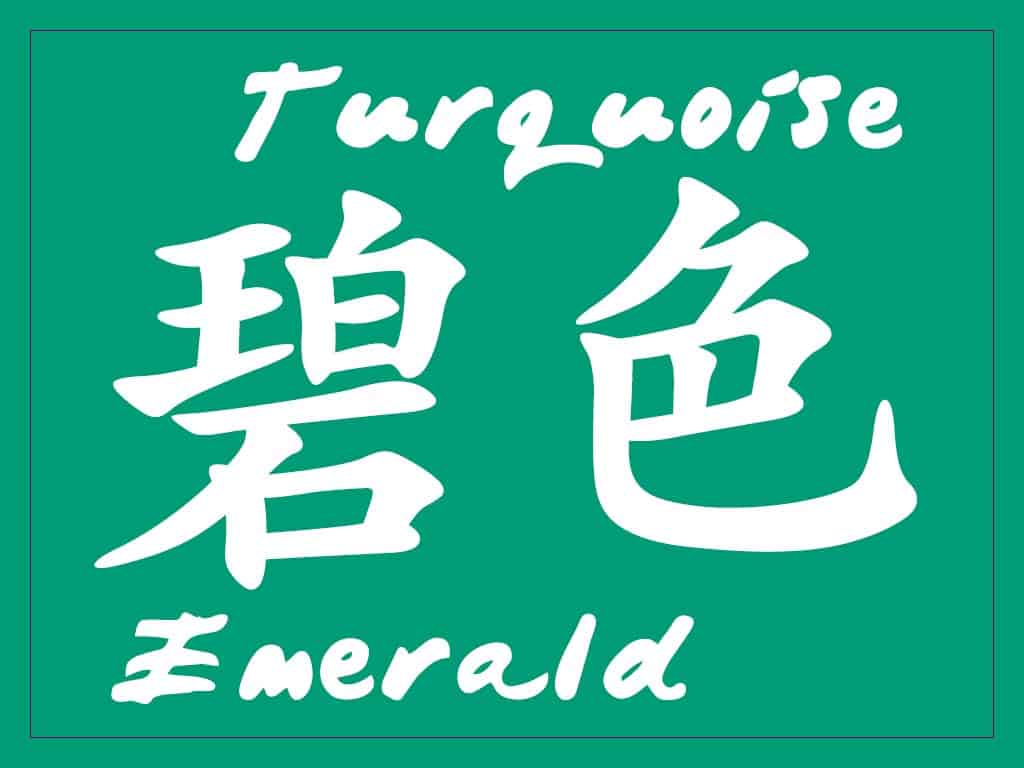
Hekishoku (碧色, へきしょく) translates as “green“, “emerald“, “turquoise“, or “aquamarine” in Japanese. It is the Japanese word for a bluish-green color that lies in between cyan and green on the color wheel.
hekishoku
碧色
green
emerald
turquoise
aquamarine
7. Fukamidori – Japanese Way to Say “Dark (Deep) Green”
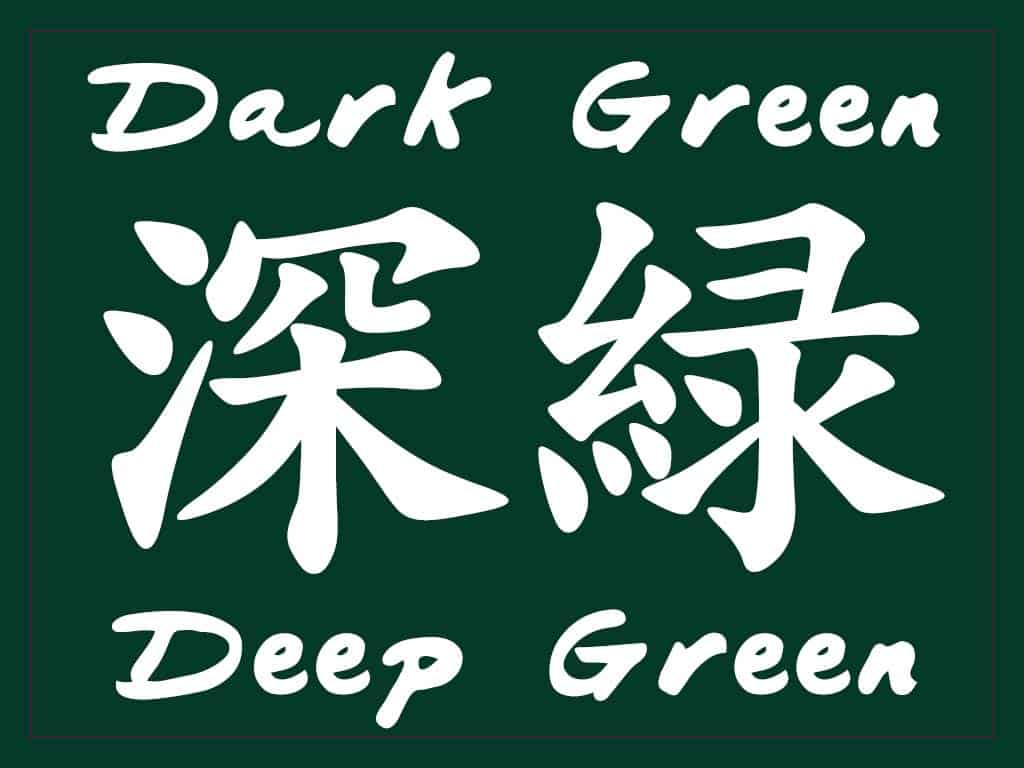
The Japanese word for “dark green” or “deep green” is fukamidori (深緑, ふかみどり). It consists of the kanji fuka (深), which is derived from the word fukai (深い), which translates as “deep“, “dense“, “intense“, “strong“, or “profound” and the Japanese word for “green”, which is midori (緑), of course.
So literally translated the word fukamidori (深緑) translates as “deep green“, “intense green“, or “strong green“. An alternative way to read the kanjis is “shinryoku” by the way.
fukamidori
深緑
dark green
deep green
8. Moegiiro – Translates as “Light Green” or “Chartreuse”
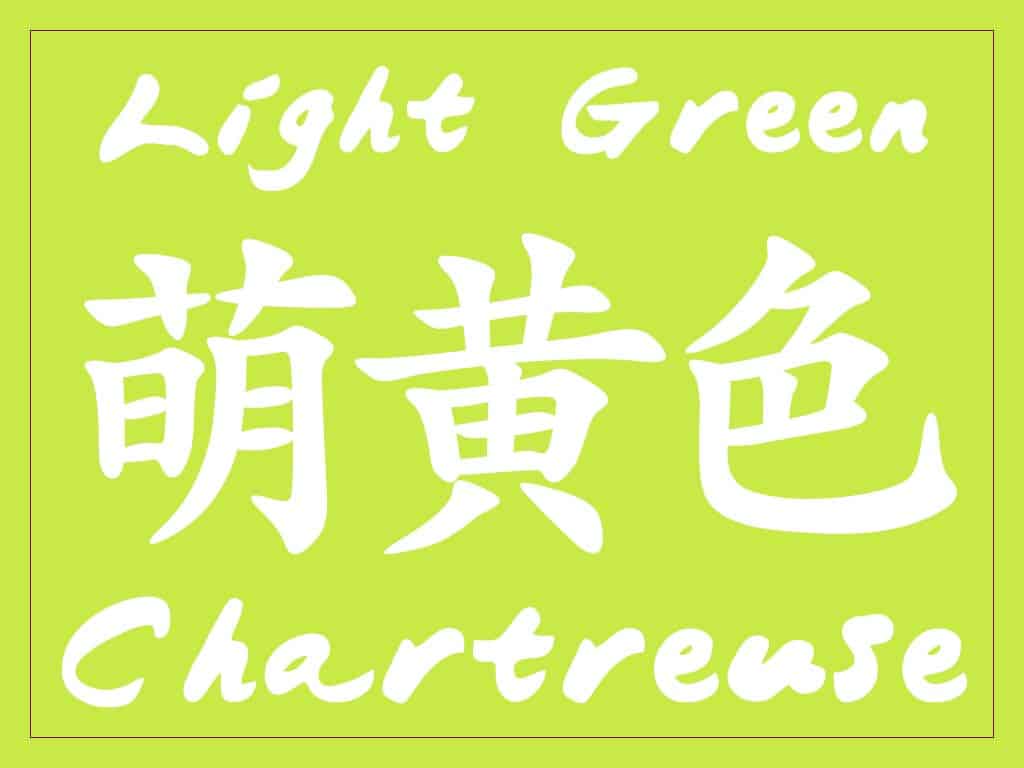
Moegiiro (萌黄色, もえぎいろ) is the Japanese word for “light green” or the color “chartreuse“. It is commonly used to refer to yellow-green or yellowish-green hues. The first part of the word moegi (萌黄) also translates as “color of freshly sprouted onions“. On top of that, 黄 is the kanji for “yellow“.
moegiiro
萌黄色
light green
chartreuse (color)
yellowish-green
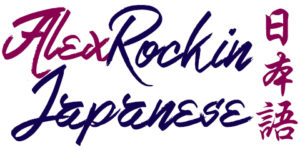

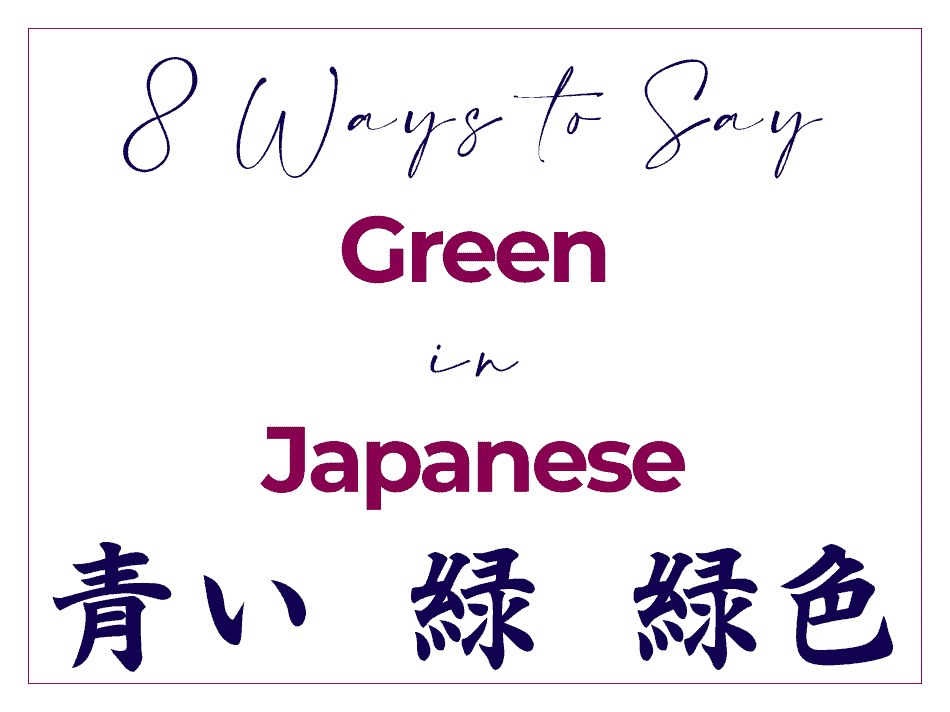
Thank you so much for this post, Alex. I have been struggling with chartreuse. You’ve made it so clear! Much obliged.